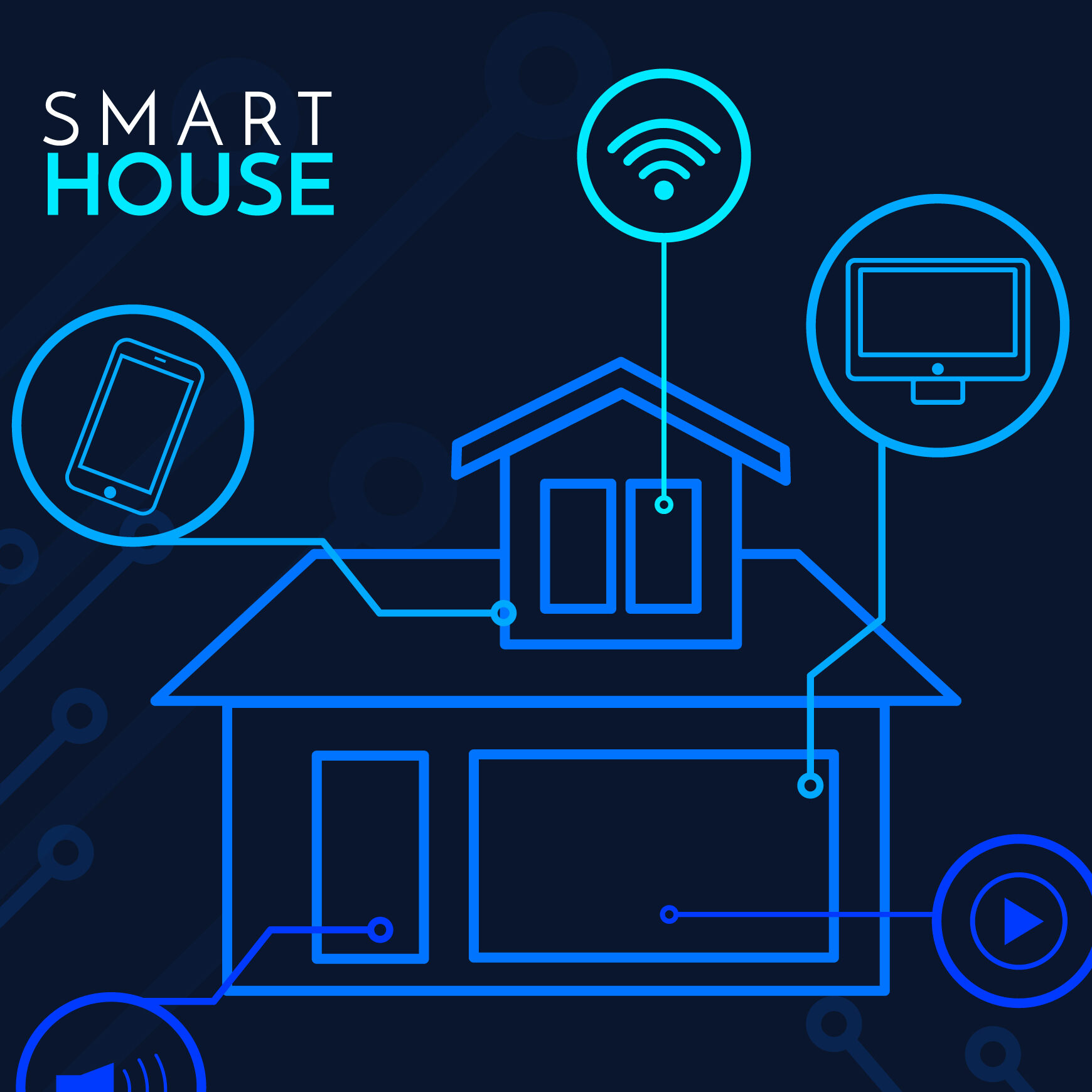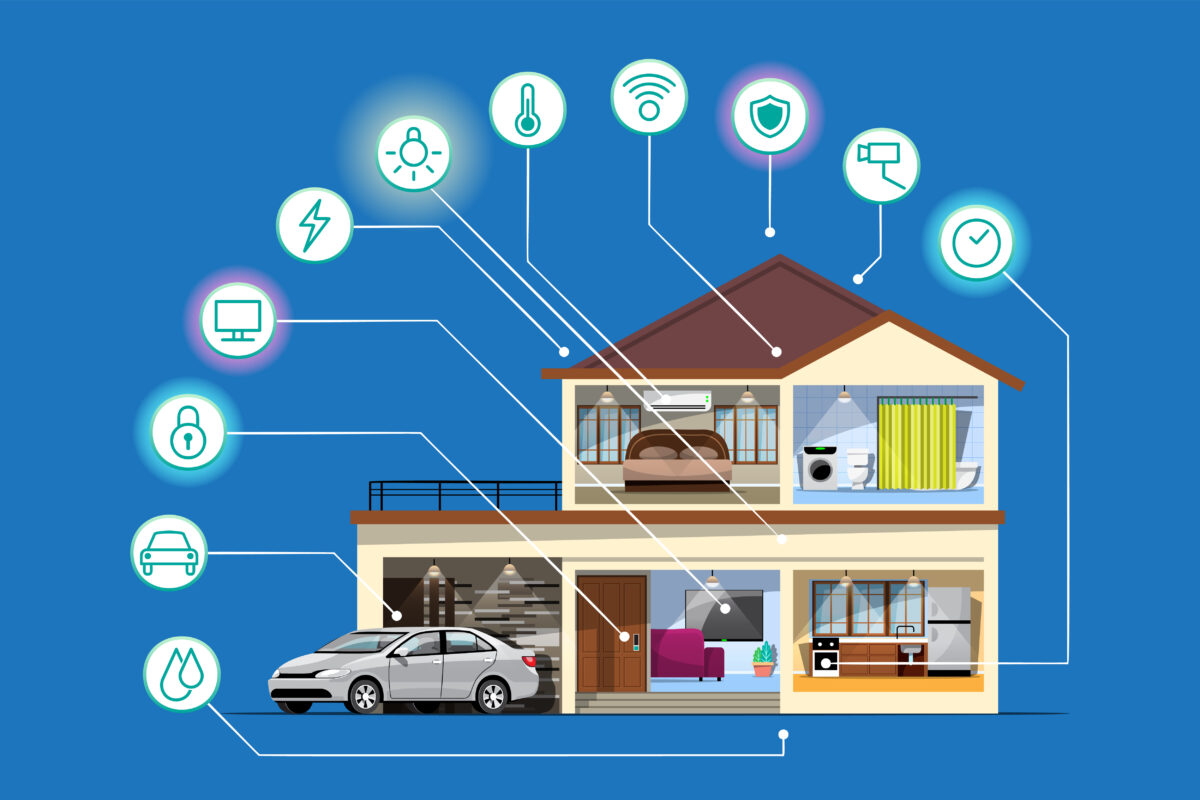Smart home devices are gaining popularity due to their unique and quality operations. Especially when it comes to home security, smart home devices give it in a new way. With many technologies incorporated into smart home devices, there is more to explore than their basic functions. Technologies like the Internet of Things (IoT), Wireless Connectivity, Voice Recognition, Artificial Intelligence (AI) and Machine Learning, Home Automation Protocols, and Smart Sensors are found in most smart home devices. These tech prowess are however mostly utilized only for their basic functions, or only one being used.
Related: 8 Recent technologies built into smart home devices
Smart lighting systems, Smart thermostats, Smart door locks, Smart security cameras, and other systems are common examples of these products. A single smart gadget does not make a smart home. You experience a smart home when you have many of these devices working together. If you are using just one of the smart devices, you can improve to a fully integrated smart home in 2024. Depending on your unique objectives and needs, let’s explore how you may improve your smart home in a variety of ways.
1. Define your Smart Home goal
Start by clearly identifying your goal for your smart home. Determine precisely which areas of your household life you wish to use smart technology to enhance. Having a clear goal for your smart home journey—whether it be energy savings, security, convenience, or entertainment—will help you stay on course.
Read: Expert tips on smart home customization
Look at every room in your house, inside and out, and consider how smart technology may be of use. Examples include smart hub controls, energy-efficient interior lighting, and outside and interior security. Your goals for a smart home may include energy monitoring devices, lighting systems, smart locks, security cameras, sensors, and thermostats. You would have a variety of goals, some of which would involve distinct attributes. Every property has different needs for a smart house, depending on its size and other conditions.
2. Design your Smart home goal
Make a strategy that is ideal for your lifestyle once you’ve decided what your smart home goal is. Think about how your home flows, where smart devices can be most helpful, and the overall aesthetic you want to create. Making sure the technology blends in with your living space depends on this stage.
Related: 90 Smart home design ideas
The overall functionality and aesthetic appeal of your home are enhanced by a well-planned smart home layout. Smart devices become imperceptible assets to your home’s comfort and efficiency when placed with care.
For instance, you may think about installing security cameras and motion detectors in strategic locations if you want to make your home more secure. To make sure your home is secure at all times, you may also link your smart door locks to your security system.
3. Select the right gadgets
Using the proper tools is essential for a smart home project to be successful. To create a unified atmosphere, do your homework and choose gadgets that both support and improve your stated purpose. You must employ voice-activated assistants, security cameras, smart thermostats, and linked devices to accomplish your smart home goals.
See also: Best cheap smart home devices
The following considerations should be examined while making a decision:
i) Compatibility: Verify that the gadgets you select are compatible with the ones you currently own.
ii) Consistency: Choose devices that are pertinent to your smart home objective and have functionality.
iii) Cost: Consider the price of the devices as well as the potential return on investment.
4. Install and configure the gadgets
After you’ve made your decisions, the following step is to install and configure your smart devices. For optimal performance and connection, be sure to follow the manufacturer-provided setup instructions in the letter. To ensure the safety of your smart home, it is important to pay attention to security elements such as firmware upgrades and password protection.
Related: Smart home tech gadgets and how they work
For instance, if you’ve installed smart thermostats, you might need to configure schedules and preferences for temperature. An app for your smart home also gives you the option to operate your thermostats remotely.

5. Integrate the smart home gadgets seamlessly
A smart home’s ultimate potential rests in the seamless integration of its components. Ensure that your devices communicate with one another, allowing for centralized control and automation. Platforms such as smart home hubs and mobile applications can help with this integration by offering a consistent interface for managing many devices.
The user experience is enhanced by seamless integration, which allows for intuitive control and automation of smart home tasks. If you have smart lights and thermostats installed, you may combine them to provide a smooth experience. When you turn on your lights, your thermostat may alter the temperature to make it more pleasant and energy-efficient.
6. Make your smart home devices energy efficient
In a smart home, efficiency is crucial for financial and environmental reasons. Start by making your selections of energy-efficient appliances, LED lighting, and smart thermostats. These gadgets save you money on utility bills in addition to lowering your carbon footprint.
i) Modify the settings on your gadgets: You can program smart home appliances to adjust their settings to your preferences and schedule. For instance, you can set your smart thermostat to drop the temperature while you are sleeping or away from home.
ii) Benefit from energy-saving features: A lot of smart home appliances have features like power-saving modes or automated shut-offs that help save energy. Make sure you activate these features to get the most out of your energy savings.
iii) Choose energy-efficient gadgets: While looking for smart home gadgets, search for those that have obtained the ENERGY STAR certification, signifying that they adhere to stringent energy-saving standards set forth by the US Environmental Protection Agency.
7. Improve your smart home gadget security
Because everything in a smart home is connected, security is critical. Set up WPA3 encryption and come up with a strong, one-of-a-kind password for your Wi-Fi network first. To patch vulnerabilities and enable two-factor authentication whenever possible, update the firmware on your devices regularly.
See Also: How to secure smart home devices in 2024
Invest in trustworthy doorbells and security cameras with cutting-edge features like encrypted cloud storage and facial recognition. These additions increase the security of your house. Link security equipment to a central hub to enable real-time alerts in the event of suspicious activity, as well as ongoing monitoring and control.
8. Expand and upgrade your smart home
A smart home’s scalability is what makes it so beautiful. Think about growing and improving your ecosystem as your needs change. Installing smart door locks or a complete home security system is a good idea if you value security. Look into premium smart TVs and sound systems if you’re an entertainment enthusiast.
For added functionality and security, think about enhancing your home’s security system with additional smart home devices like smart locks or lighting. Consider replacing your outdated or ineffective smart home system with a more sophisticated hub that works with the newest gadgets and features.
As your smart home gets bigger, connectivity is essential. Make sure that new devices are easily integrated with current ones to promote a unified and efficient experience. You can customize your smart home to fit your evolving lifestyle needs thanks to its scalability.
9. Regularly maintain the devices
Smart home maintenance is sometimes forgotten, yet it is essential for durability and peak performance. Update device firmware regularly to have access to the most recent features and security updates. Clean sensors and cameras to avoid dust or debris interference and ensure proper performance.
When adding new devices, ensure compatibility to avoid any conflicts within your smart home network. Inspect and replace batteries in smart locks and sensors regularly to avoid unexpected failures. This monthly maintenance protects your smart home’s efficiency and dependability.
10 Continuous improvements
A smart home is a living environment that is always evolving. Keep up to current on firmware upgrades, new product launches, and upcoming smart home technologies. Implement these innovations wisely to improve overall functioning.
Reassess your smart home goals regularly and alter your automation procedures accordingly. To remain at the forefront of smart home capabilities, embrace technologies such as artificial intelligence integration and voice-activated assistants. Continuous enhancements guarantee that your smart home remains innovative and efficient.
Conclusions
Maximizing the promise of smart home technologies necessitates a planned approach. The foundation is formed by identifying precise goals, planning a layout that suits your lifestyle, choosing appropriate and cost-effective technologies, and attentive installation. Integrating gadgets seamlessly and focusing on energy efficiency leads to a better user experience. Security, scalability, and routine maintenance assure long-term performance. The goal is to keep improving, to stay updated about new developments, and to adapt your smart home to changing demands. By following these guidelines, your smart home in 2024 will be able to effortlessly mix convenience, efficiency, and innovation to enrich your living experience.
FAQs
Smart homes integrate devices such as lighting, thermostats, and security systems, allowing users to control and automate them through a central hub or remote access via smartphones or voice commands.
Smart homes offer enhanced efficiency through task automation, energy savings, advanced security features, convenience, comfort, and continuous technological advancements for an upgraded lifestyle.
The top smart home devices include smart lighting systems for ambiance and efficiency, smart thermostats for optimized heating and cooling, smart door locks for enhanced security, smart security cameras for advanced surveillance, voice-activated assistants for convenient control, and integrated smart home hubs for seamless device communication and automation.

